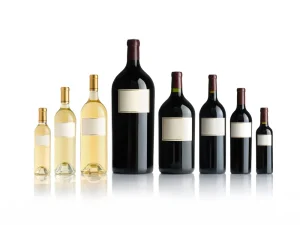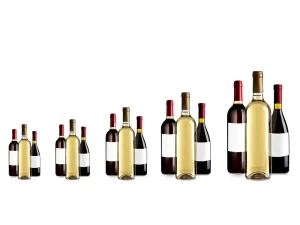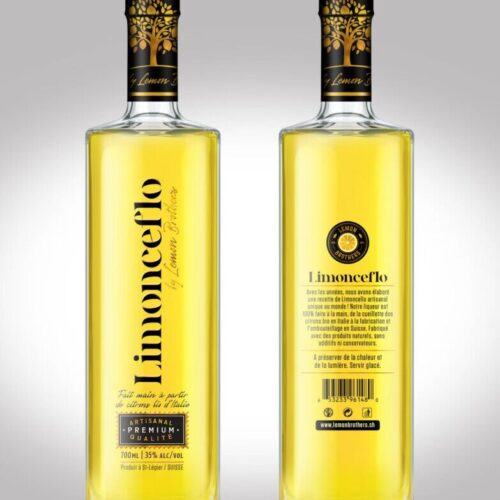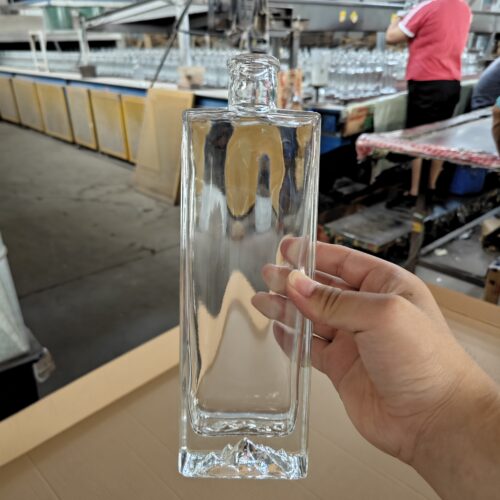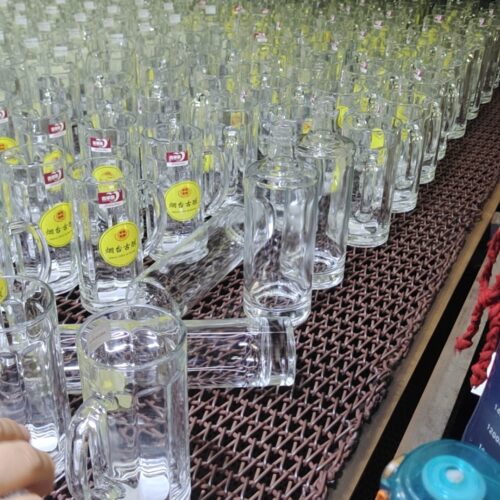What’s the difference between M, mm, ml, and mil? This question will come to mind when reading different beverage or bottle labels. Especially if you are a wine consumer or seller, you must be familiar with these terms marked on wine bottles.
Understanding these units is key to a better understanding of beverage content. Many people get confused about these units and mix them up. Do you also find yourself among them? Worry not! In this detailed article, I will clarify the main difference between these units in the easiest way. So, let’s get started!
Why Are Measurement Units Important?
As I said above, measurement units give clarity and precision to any product. These units are handy in the wine industry. So, before we discuss their differences, let’s explore why these units are essential.
1- Ensuring Accuracy in Production
These measuring units help manufacturers ensure accuracy and save time and effort. For example, the ml unit allows them to fill an equal amount of wine in the bottles. So, these units eliminate confusion for both customers and manufacturers.
2- Facilitating Communication Across Borders
All these measurement units are used universally. So, it has become effortless for both customers and sellers to communicate. For example, suppose you are buying a wine bottle in Paris, Germany, or New York. In that case, these units will help you get the accurate quantity. Moreover, these units are also helpful for the international transportation of wine bottles.
3- Maintaining Consistency and Standardization
As I said above, all these units are used internationally, so they maintain consistency and standards. Imagine you are traveling in different countries and want to buy a wine bottle. In one country, a wine bottle is labeled as 3/4 quarter; in another, it is labeled 750ml. You will get confused between those, although both are the same. So, these measurement units remove this confusion and maintain standardization.
Differences Between M, mm, ml, and mil
M, mm, ml, and mil are different types of measurement units with specific purposes. For example, M(meter) is a unit of length used to measure heights. Mm ( millimeter) is the smaller unit of length. Ml ( milliliter) measures the volume of any liquid. Lastly, mil is used to measure the thickness of any protective coatings.
I hope you understand the basics of these measurement units. Let’s explore each measurement unit separately and examine how it differs.
1- Meter (M)
A meter is a unit of length. It measures the width, height, and distance of something or someplace. Most of the wine bottles have marked meters on their label. However, if the wine in the bottle is measured in milliliters, why is it mentioned there? Firstly, it measures the height of the wine bottles.
For instance, most wine bottles have a height between 0.3 and 0.35 meters. This measurement of height in meters helps you with their storage and transportation. HOW? Let me explain it in simple words. Imagine you have a stock of wine bottles and want to store them in a safe place.
When you know the height of the wine bottles, you can easily arrange storage compartments.
You can prepare a proper-length storage chamber accordingly. Moreover, the size of the bottles also helps with their easy international transportation. Cellars and fridges are used to transport wine bottles. They are manufactured according to the height of the wine bottles, ensuring their safety.
2- Millimeter
A millimeter is the smaller unit of the meter. It is 1/1000th of a meter. Simply put, a millimeter is equal to 0.001 meter. Basically, it is used to determine the thickness of something. If we talk about wine bottles, it is a measurement of their thickness. Ideally, the wine bottles have a thickness between 2 and 4 mm.
This range can vary with the quality of the wine glasses. Moreover, the width or diameter of the wine bottles is also measured in mm. For example, average wine bottles have a diameter between 70 and 90 mm. However, they may exceed premium wine bottles. Measuring the diameter of wine bottles is crucial. It helps in their proper storage and transportation.
Above all this, the corks and closures of wine bottles are also measured in mm. Wine bottles have different neck sizes, so proper cork measurement is essential. A properly sized cork ensures the quality and aging of the wine. Lastly, wood packaging, which is best for short-distance transport of wine bottles, is also measured in mm.
3- Milliliter (ml)
Milliliter is the smaller unit of liter. It is 1/1000 of a liter. Basically, it is the unit of volume and is used to measure the quantity of any liquid. For instance, the amount of wine in wine bottles is measured in ml. There are different sizes of wine bottles, each containing a distinct quantity of wine.
For example, a standard wine bottle contains 760ml of wine. Some regular bottles contain 370ml, which is known as half bottles. However, some wine bottles contain 1500ml of wine. These are known as magnums and are used in large gatherings. This unit is beneficial in many ways.
For example, wine manufacturers use ml units to mix measured quantities of the ingredients. It also helps wine consumers examine their wine consumption per week or month. Moreover, milliliters maintain the measuring consistency worldwide. It also allows you to compare the prices of different wine brands per liter.
4- Mil
Another unit you can see on wine bottles is mil. It is one-thousandth of an inch. Mil measures the thickness of protective layers. You may get confused between mil and millimeters, as both measure thickness. Let me clarify. Actually, a millimeter is used to measure the thickness of wine bottles, corks, etc.
Conversely, mil is always used to measure the thickness of an added protective layer of wine bottles. You must have seen shrink wraps around the corks of the wine bottles. These wraps protect the corks from external damage and give an extra protective shield to wine. The thickness of those shrinks is measured in mil.
For example, a standard shrink is 2-4 mil thick, while some premium wine bottles have 5-7 mil thick shrinks. You must also be familiar with plastic and foam used for cushioning wine bottles. The thickness of those foams is also measured in mil. It ranges from 3-5 mil for bubble cushions and 5-10 mil for plastic cushions.
Quick Highlight: Unlike M, mm, and ml, metric-based units, a mil is an imperial unit. This means it is not a universal unit but is used in the United States. It measures thickness at the microscopic level. Therefore, it applies where precision matters in microns.
Choosing the Right Unit for the Right Purpose
Meter, millimeter, milliliter, and mil are measurement units used for various purposes. Understanding these units is crucial as they help you choose the correct size of the bottle and other beverages for your needs. Let’s take a short glimpse of how you can do this.
- A meter is a large unit and is best for measuring the lengths of storage chambers. A millimeter should be used to measure the thickness of glass bottles and corks. At the same time, a milliliter is the standard unit for measuring the volume of wine in a bottle. Lastly, mil should be used to measure the thickness of protective layers.
- The right unit ensures accuracy and person. For example, ml is best for measuring the volume of wine in the bottle instead of litter. Moreover, mm is suitable for measuring thickness, unlike a meter.
- The right unit ensures communication and safety. For instance, meters and millimeters help prepare storage compartments worldwide. A milliliter is the right unit for measuring the volume of wine and aids consumers worldwide.
- The right unit enhances the efficiency of production and packaging. For example, mm should be ideally used to measure the diameter of corks. A correctly measured cork helps protect the wine inside the bottle. Moreover, mil is ideal for measuring protective sheets.
Frequently Asked Questions
Is A mil the same as a mL?
No, mil is not the same as ml. There is a significant difference between both units. For example, mil is one-thousandth of an inch. It means one mil is equal to 0.001 inches. Meanwhile, ml is one-thousandth of the litter. This means that 1 ml is equal to 0.001 liters.
Why are milliliters (ml) used in wine bottles?
A milliliter is a universal unit used to measure the quantity of wine in a bottle. This unit helps consumers and sellers to communicate worldwide. A standard wine bottle contains 750 ml of wine.
Can “m” be used for liquid measurements?
No, m (meter) cannot be used to measure liquid. It is a large unit used to measure length and distance. The milliliter is the smaller unit of the meter used to calculate the quantity of liquid.
Conclusion
Meter, millimeter, milliliter, and mil are different units of measurement. These units are used in different fields, such as the wine industry. In this comprehensive article, I have discussed their differences in detail. For example, the meter is a large unit measuring the length of bottles and storage chambers.
Milliliter is the second measurement unit mentioned on the wine bottles. It measures how much a wine bottle contains the amount of wine. At the same time, a millimeter measures the thickness of the corks and bottle. A mill is a unit that measures the thickness of the protective layers. All these units are of equal importance, which helps consumers and sellers universally.


